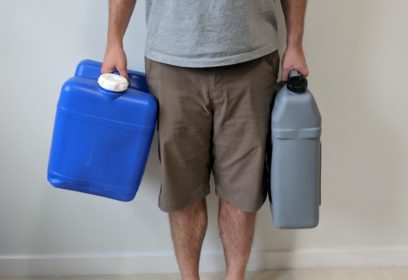
Water Preserver Vs Regular Bleach Vs
Water; Scaffold: Better to use than a ladder, as ladders may fall back. Mixing Bleach with Power Wash Solution. Pressuring washing the house with bleach is not an easy job. Before you even do anything, brush up on your facts along with how to mix bleach with power wash solutions. Using just bleach can damage your house. This can be water from the tap, a river, a lake, snowpack, rainfall you collected from your gutters, or another source. Of course, the higher quality the source, the better quality your water will be. Step 1 – Add Bleach to the Water. Add either eight drops of 6 percent bleach or six drops of 8.25 percent bleach to one gallon of water.
Water Preserver Vs Regular Bleach Spray
Q:Is it okay to use diluted household bleach as a mouthwash or in a Waterpik? I’ve heard that some dentists recommend this as an alternative to prescription mouthwashes for preventing or controlling gum disease.
- If using bleach, all you need to do is to use 1/8 cup for every 100 gallons of water. It’s best to pour it with a skimmer to avoid the harsh chemicals from harming your skin while swimming. Popular brand names such as Clorox are recommended to use, as they have the powerful ingredients to disinfect your pool.
- The math is real easy with bleach - 5.25% bleach will raise the Cl level 5.25ppm per 10,000 gallons of water. There are two tools out there, Ben's Buest Guess CYA chart which helps adjust the cl level per stabilizer level and Mike's BleachCalc program that provides the conversions and dosages.
- To ensure safe drinking water and to avoid constant rotation and dumping of your water storage every few months, plan on pre-treating your water with a product called 'Water Preserver'. This concentrate is an EPA approved treatment that will provide you with 5 years of emergency water storage when used in combination with approved (air tight.
A: It might be, but there’s been too little research to recommend it. We could find only a few small studies testing the effectiveness of rinsing the mouth with a low concentration of sodium hypochlorite (commonly known as bleach) for reducing the plaque that causes or worsens gum disease.
For instance, in a pilot study in the Journal of Periodontal Research in 2014—funded in part by Clorox—researchers at the University of Southern California (USC) School of Dentistry randomly assigned 30 people with advanced gum disease to rinse twice a week for 30 seconds with either 0.25% sodium hypochlorite solution (made by diluting Clorox regular bleach) or plain water for three months. Participants also received professional irrigation under their gums with bleach or water after the first and second week.
Of the 12 people who stuck with the regimen for the full three months, those in the bleach group had less plaque buildup and less bleeding when their gums were probed at six sites than those in the water group.
A review article by one of the above study’s authors, published in the Journal of the Western Society of Periodontology in 2015, concluded that rinsing two or three times a week with 0.25% sodium hypochlorite is “a viable alternative to current antiseptics for dental plaque removal and control of periodontal disease.” The article cited its “convenience and affordability” compared to using commercially available therapeutic mouthwashes, such as chlorhexidine (Peridex and others), which requires a prescription. But the review was based on only four small studies, and one of them was published in 1972.
Of note, higher concentrations of sodium hypochlorite (1% to 5%) have long been used in dentistry for disinfection during root canals. And the American Dental Association Council on Dental Therapeutics has designated 0.1% sodium hypochlorite as a “mild antiseptic mouth rinse.” Although it funded the USC study, Clorox states on its website that its bleach “is not for personal usage,” such as brushing teeth or gargling.
If you are considering rinsing with bleach, check with your dentist first about its advisability and what concentration you should use. For reference, a 0.25% concentration of sodium hypochlorite is equal to 2 teaspoons of regular bleach mixed with 1 cup (8 ounces) of water. A fresh batch must be made each week as the solution weakens over time. Avoid using it more than twice a week, which some sources suggest might cause brown staining on the teeth.
This article first appeared in theUC Berkeley Wellness Letter.
Also seeWhat You Should Know About Mouthwash.
